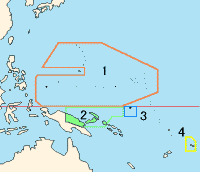| Governor of the South Seas Mandate | |
|---|---|
| |
 Flag of the governor of the South Seas Mandate | |
| Reports to | Prime Minister of Japan (until 1929) Minister of Colonial Affairs (from 1929) |
| Seat | Koror City |
| Formation | 28 December 1914 |
| First holder | Matsumura Tatsuo |
| Final holder | Boshirō Hosogaya |
| Abolished | 2 September 1945 |
| Succession | High Commissioner of the Trust Territory of the Pacific Islands |


The Governor of the South Seas Mandate (officially known as the Director of the South Sea Agency) was an official who administered the South Seas Mandate, a Class C League of Nations mandate in the Pacific Ocean under the administration of the Empire of Japan, as part of the Japanese colonial empire, between 1922 and 1944. The territory consisted of islands awarded to Japan by the League of Nations after World War I, prior to which they had been part of the German colonial empire. During World War II, the United States captured the islands from Japan. After World War II, the United Nations placed the territory under the United States trusteeship as the Trust Territory of the Pacific Islands. The islands are now part of Palau, the Northern Mariana Islands, the Federated States of Micronesia, and the Republic of the Marshall Islands. [1]













